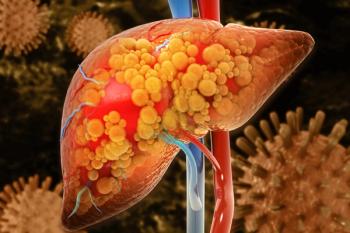
Afrezza, Medicare CGM Struggles Top Stories for 2016 in Evidence-Based Diabetes Managementâ„¢
There's no shortage of reader interest in Afrezza-the inhaled, meal-time insulin from MannKind-despite reports from Wall Street that the prescription count is climbing slowly.
Afrezza, the inhaled, fast-acting mealtime insulin from MannKind Corporation, remains a curious topic in diabetes care: despite weekly reports from Wall Street about low prescription counts, reader interest is enormous.
Three articles about Afrezza are among the 5 articles in Evidence-Based Diabetes Management (EBDM)™ that generated the greatest online reader interest during 2016. There was no shortage of news about Afrezza over the past year, starting with Sanofi's January announcement that it would end its agreement with MannKind to market the drug. Over the course of the year, MannKind built its own sales force, relaunched the product, and worked with payers to improve access for patients with diabetes.
Michael Castagna, who joined the company as its chief commercial officer, said in an interview that there’s been significant progress on patient access. The most noteworthy milestone came October 1, 2016, when ExpressScripts added Afrezza to its national and Part D formularies, without prior authorization. However, in the
Most-read EBDM™ articles of 2016:
5.
Authors from the Joslin Diabetes Center, Joanna Mitri, MD, MS; and EBDM™ editor-in-chief Robert A. Gabbay, MD, PhD, FACP, who is Joslin’s chief medical officer, outlined the development of the Joslin Clinical Analytic Tool, or JCAT. This method of measuring quality in diabetes care was a cover story in the theme issue, “
4.
This update about Sanofi’s decision in January 2016 to sever its marketing agreement with MannKind featured speculation from analysts who follow the company on how it might survive. MannKind has resisted calls to simply cut the price of Afrezza, saying it has not taken a price increase since the launch, and increases in other fast-acting insulins have closed the price gap with those products.
3.
For the issue on seniors and diabetes, distributed at the 76th Scientific Sessions of the American Diabetes Association, EBDM™ featured a first-person account from Dan Patrick who has lived with type 1 diabetes for more than 50 years. Patrick shared how he gathered data and worked through a complex, multi-level appeal to get coverage for his Dexcom G4 continuous glucose monitor (CGM). Lack of routine Medicare coverage for these devices is one of the thorniest issues on the diabetes advocacy agenda. This week, Patrick said he’s bracing for another round of problems in a new coverage year, but there’s also some hope. FDA granted just a new indication to the Dexcom G5 Mobile, which patients will be allowed to use for dosing. Some believe this will pave the way to more routine Medicare coverage for CGM.
For more on the policy challenge of Medicare CGM payment,
2.
For our fall issue on therapeutics, EBDM™ invited followers of our
Said Castagna, "The weekly script counts don't reflect the underlying noise." He promised that the "noise" will translate into sales in 2017.
1.
The commentary from R. Keith Campbell, MBA, BPharm, CDE, professor emeritus of pharmacotherapy at Washington State University, offered readers both an overview of how the inhaled insulin does its job and a patient’s perspective on using the product correctly. Campbell’s explanation of how titrating Afrezza doses differs from that of other insulins is a must-read for physicians who treat people with diabetes, and for patients considering the drug.
Newsletter
Stay ahead of policy, cost, and value—subscribe to AJMC for expert insights at the intersection of clinical care and health economics.












































